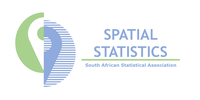Abstract
Sebnem Er, Sulaiman Salau, Allan Clark
University of Cape Town Statistical Sciences Department
Spatial point pattern events along networks can be observed in many different areas of human activity. There are numerous studies estimating the density of spatial events that occur on a network
such as crimes, economic activities and road traffic accidents in major city road networks etc. Most of these studies usually perform both planar and network KDE and make comparisons between the two commonly used methods. In this research, we focus on the traffic accidents that occurred in the City of Cape Town metropolitan municipality between 2015 and 2017, specifically in the centre of Cape Town. One of the most commonly used method for estimating the density of road traffic accidents is Kernel density estimation which is usually performed in two forms: (1) Planar KDE and (2) Network KDE. Planar KDE is based on the Euclidean space where spatial point events are weighted according to their radial distances (bandwidth) from the grid centroid. Events inside a specified radial bandwidth contribute to density estimation. However, since road traffic accidents occur along a road network, which is composed of lines and vertices, the analysis of the density of traffic accidents and identification of hotspots along the network with planar KDE is insufficient.
More recently, network KDE which is based on the network constrained space where events are weighted according to the distance measured along the network has been developed to improve the density estimation. In network KDE, projected events along a network bandwidth contribute to density estimation and it has been shown that it provides more accurate density estimation than planar KDE. The main aim of this research is to estimate the density of road traffic accidents in Cape Town along a network using the network KDE method and expand the analysis using Poisson point process models appropriate for spatial point events occurring along line networks including covariates such as traffic volume, closeness to an intersection, speed limit etc.


